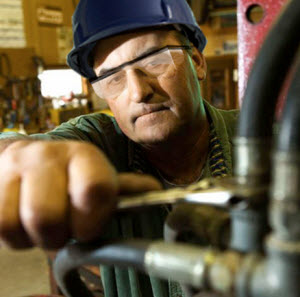
By 2015, one in every five American workers will be over 65 and by 2020, one in four American workers will be over 55, according to the U.S. Bureau of Labor Statistics (BLS). To raise awareness of the health and safety issues affecting older workers, the National Institute for Occupational Safety and Health (NIOSH) recently released a new web page with information to help employers match the needs of an aging workforce.
According to NIOSH, older workers tend to experience fewer workplace injuries than their younger colleagues, perhaps as a result of greater experience or increased caution. However, the injuries they do experience tend to require more time to heal, and incidents affecting older workers are more likely to be fatal, with a dramatic jump in fatalities around age 60.
The following are some of NIOSH’s tips for keeping older workers safe:
- Match tasks to abilities. Everyone benefits when workers are able to perform their jobs well. If older workers have physical limitations, assign them to tasks that do not require them to strain beyond their ability.
- Manage hazards. When assessing hazards in the workplace, make sure to consider whether conditions that might not be hazardous for younger employees could pose a problem for older workers. For example, a noisy work environment might not bother a 25-year-old employee (though you should still assess noise levels and provide hearing protection if necessary), but an older worker in the same environment might have difficulty hearing coworkers to communicate about important safety issues.
- Consider ergonomics. Provide and design work environments that take address ergonomic concerns. Examples include better illumination where needed, screens and surfaces with a minimum amount of glare, ergonomic workstations and tools, and adjustable seating.
- Invest in training and building worker skills at all age levels. Older and younger workers can learn from each other, with older workers serving as mentors and sharing their experience, and younger workers helping older workers adapt to new technologies.
- Proactively manage reasonable accommodations and the return-to-work process after injury or illness absences.
- Train supervisors on the issues associated with an aging workforce and the best ways to address them.
